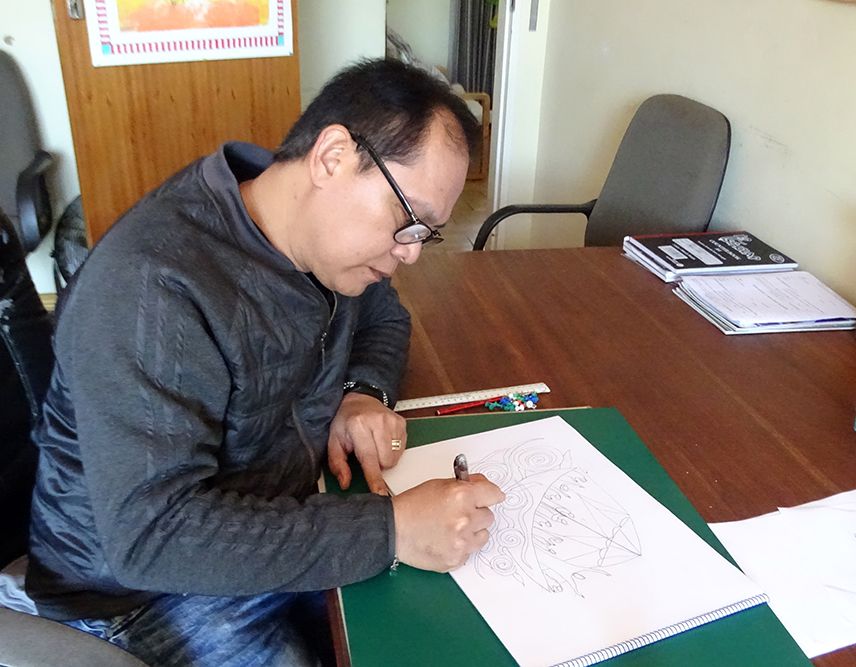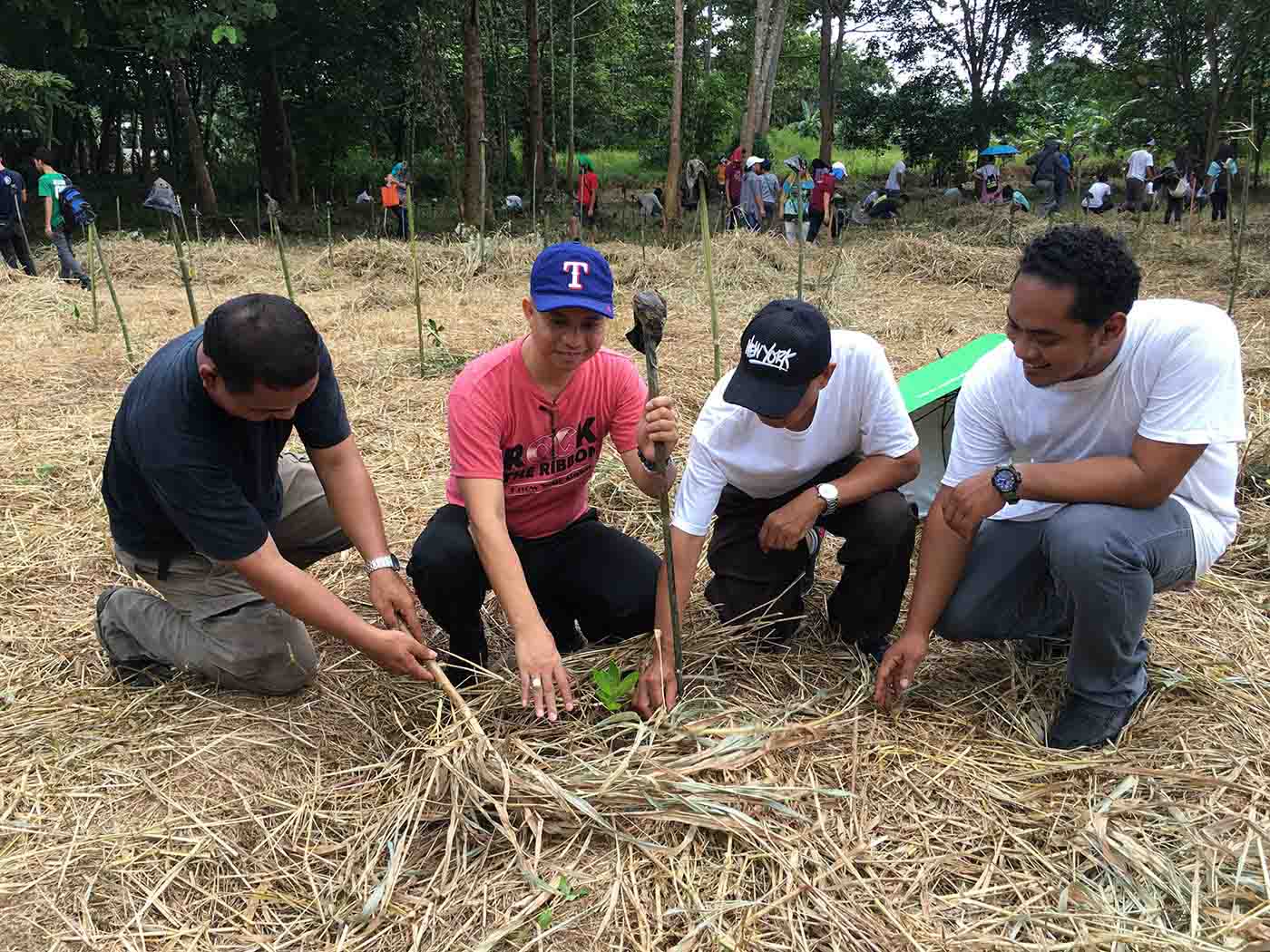The local Churches across Asia were filled with joy upon hearing that Pope Francis established the “lay ministry of catechist” in his 2021 apostolic letter Antiquum Ministerium; this “ancient ministry” can be traced back to the early Church as noted by the apostle Paul in writing to the community in Corinth (1 Cor 12:28-31). There are numerous forms of service for the building up of the Church; different gifts are given to individuals; always, it is the one and the same Spirit who distributes all these charisms (1 Cor 12:4-11).
Pope Francis has sought to familiarize himself with the realities and needs of the local Churches of Asia through his various pastoral visits: South Korea (2014), Sri Lanka and the Philippines (2015), Myanmar and Bangladesh (2017), and Thailand and Japan (2019). Certainly, he was aware of the pivotal missionary contribution of countless catechists who served as witnesses, teachers, translators, guides, counselors, and social workers throughout Asia.
Numerous Asian resources for the spread of the Gospel have been developed in the Vatican II era: the Catechism for Filipino Catholics (with Tagalog and Cebuano translations); translations of the Catechism of the Catholic Church in Chinese, Vietnamese, Korean, Bengali, and other Asian languages. These few, selected examples serve to highlight the importance of the catechetical ministry for “evangelization in the contemporary world” (cf. Evangelii Gaudium n. 163-168) so that there will be “the penetration of Christian values into the social, political, and economic sections [of society]” (EG n. 102).
This modest presentation will highlight two Asian gifts to the entire process of catechetical instruction. The first is drawn from the Federation of Asian Bishops’ Conferences (FABC) that emerged from Pope Paul VI’s 1970 Asian visit; it presents a method for pastoral engagement and faith transmission, known as the “Pastoral Spiral.”
The second item focuses on the content of the message; it is termed “renewed integral evangelization.” This vision is found in the 1991 month-long national assembly, the Second Plenary Council of the Philippines.
“Pastoral Spiral” Methodology
The local Churches of Asia envision their mission as becoming a “communion of communities,” “a participatory Church,” and an “inculturated local Church” that “witnesses to the Risen Lord.” Thus, the FABC has evolved a unique approach of pastoral engagement. This four-stage “Asian” methodology has been termed: the “Pastoral Spiral.”
The process begins with exposure-immersion; also known as “entering into a dialogue-of-life.” Exposure-Immersion follows the basic principle of the Incarnation. Local Christians seek to share the daily lives of their neighbors and communities.
The second stage of social analysis follows. Communities try to evaluate the social, economic, political, cultural, and religious systems in society. They observe and analyze events and trends, discerning the impact of rapid social change on human lives. They evaluate the signs of the times, the voices of contemporary age, the events of history, and the needs and aspirations of people and communities.
Asians have seen the necessity of integrating social analysis (stage two) with the contemplative dimension (stage three) of evangelization and human development. This third stage of faith reflection emerges from Asia’s religio-cultural heritage.
Through this contemplation people discover God’s presence and activity within social realities, discerning not only negative and enslaving social aspects, but also the positive, prophetic aspects of life that can inspire genuine God-awareness and spirituality. This stage in the total process enables the poor to make their unique contribution to the Church’s mission; it brings prayer and spirituality into the endeavor.
The third stage of ongoing spiritual-theological reflection issues into the fourth stage called pastoral planning, which seeks to translate the previous three stages into actual, realizable mission plans of action. Indeed, concrete programs of evangelization and catechesis are ultimately necessary, but they are better conceived through this Asian process that actively discerns what the Lord of History is challenging the Church to be and to do.
One should note that this process is a spiral–it must be repeated frequently. The local Churches in Asia have committed themselves to this demanding approach to missionary evangelization. And, catechists have a pivotal role in implementing this pastoral cycle vision!
Renewed Integral Evangelization
Today, the universal Church as well as the Asian Church–and the Philippine local Church–sees that the “principal elements” of missionary evangelization and catechesis encompass:
• presence and witness;
• commitment to social development and human liberation;
• interreligious dialogue;
• proclamation and catechesis; and,
• liturgical life, prayer and contemplation.
In a word, the one evangelizing mission of the Church is comprised of several component elements and authentic forms.
For Pope Paul VI, who sees that “evangelizing means bringing the Good News into all strata of humanity” (Evangelii Nuntiandi n. 18), Christian presence and witness of life form the “initial act of evangelization” (EN n. 21). Daily activities, living together in harmony, lives as individuals of integrity, duties in the community–all these are to be a basic “faith-witness” that demonstrates how Christian living is shaped by Christian faith and values. Through this wordless witness, “Christians stir up irresistible questions in the hearts of those who see how they live” (EN n. 21). People desire and respect authentic witnesses!
Community living as good neighbors based on faith convictions should naturally issue in a commitment to social development and human liberation, a genuine service of humanity. This means serving the most unfortunate, especially those on the “peripheries” (EG 20) and the “fringes of humanity” (EG 46), witnessing to justice, defending the integrity of creation. This dimension of evangelization includes all areas of social concern, ranging from peace-building, education and health services, to promoting family life and good government.
All evangelizing activities are inserted into specific contexts; particularly in Asia, these activities naturally assume an interreligious dimension. Thus, the Church in Asia, similar to most places in the world of today, accomplishes her mission in pluralistic and diverse cultures. She enters into interreligious dialogue, cooperating with the followers of the great religious traditions. John Paul II asserts: “Interreligious dialogue is a part of the Church’s evangelizing mission” (Redemptoris Missio n. 55). This dialogue emerges from one’s faith convictions.
In missionary catechesis today there is the role of explicit Gospel proclamation and catechesis. This dimension of evangelization includes preaching, catechesis on Christian life, teaching the content of the faith; in short, this means “telling the Jesus story.” When the Holy Spirit opens the door and when the time is opportune, Christians do tell the Jesus story, giving explicit witness and testimony to the faith. This is the process through which the Christian faith is communicated to the next generation of believers.
Finally, integral evangelization and catechesis will necessarily include liturgical life, prayer and contemplation. No one can effectively be engaged in the Church’s mission without a strong faith and prayer-life. Evangelization needs holy men and women who are themselves on fire with the love of Christ. Spreading the fire of the Gospel will be accomplished only by those already burning with an experience of Christ. Holiness is an irreplaceable condition for all evangelizers.
These five dimensions of an integral understanding of evangelization complement and reinforce each other. In speaking of the complexity of the Church’s evangelizing action, Paul VI gave a timely admonition: “Any partial and fragmentary definition which attempts to render the reality of evangelization in all its richness, complexity and dynamism does so only at the risk of impoverishing it and even of distorting it” (EN n. 17).
Thus, an older concept of the Church’s mission has been set aside. No longer are the elements of social justice, interfaith dialogue, peace-building, education and health care, life-witness, etc. simply seen as “preparatory” to evangelization [praeparatio evangelica]; all five “principal elements” are constitutive of an integral understanding of catechesis. Concomitant with this expanded vision of evangelization, one finds a renewed emphasis on the missionary nature of the entire Church. Every baptized member of the Church is an evangelizer, whether layperson, ordained, or religious. And, catechists serve the mission of the Church in a unique way!
Truly, the entire Church–Asian and beyond–rejoices that Pope Francis has formally established the ministry of catechist in the Church. He echoes the sentiments of the Second Vatican Council that noted: “Worthy of praise too is that army of catechists, both men and women, to whom missionary work among the nations is so indebted” (AG 17; AM 4). We pray with Pope Francis: “Let us not allow ourselves to be robbed of the joy of evangelization” (EG 83)!




























